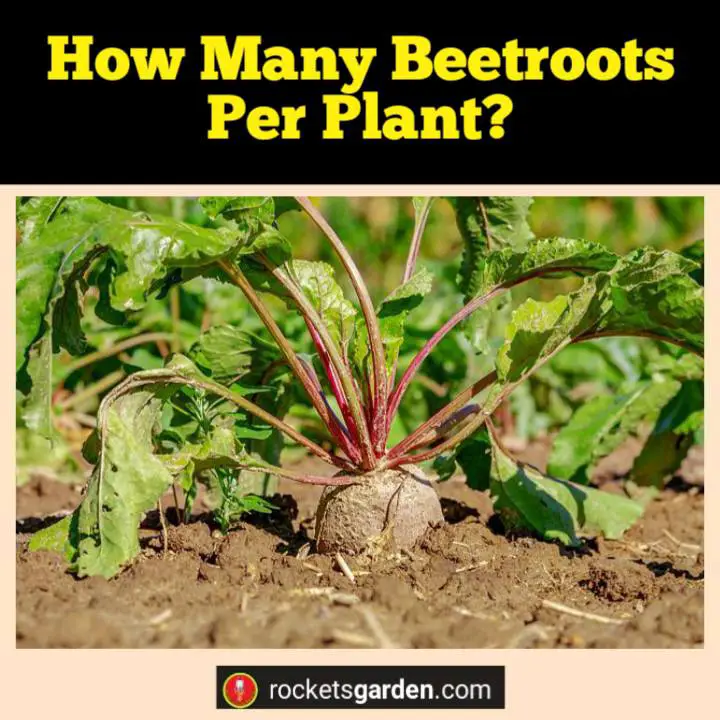
Beetroot is a nutritious and delicious vegetable that can be grown in a garden or farm setting. Whether you are a beginner or an experienced gardener, knowing how to maximize the yield of your beet plants is essential for a successful harvest.
How Many Beetroots Per Plant?
Generally, one beetroot is produced per plant, although this can vary depending on the variety of beetroot and the growing conditions. Beetroot is a biennial plant that is grown as an annual crop, and it produces a single root that is harvested for consumption.
The size of the beetroot can also vary depending on the growing conditions, with some plants producing smaller or larger roots. To ensure a good crop of beetroot, it is important to plant the seeds in well-drained soil and to keep the plants well-watered throughout the growing season.
Additionally, regular fertilization and weeding can help to promote healthy growth and increase the yield of beetroot per plant.
How Many Beets Can I Expect Per Square Foot Of Planting Space?
The yield of beets per square foot of planting space depends on the variety of beet, growing conditions, and the spacing between the plants. If the beets are spaced too close together, they may not have enough room to grow and reach their full potential.
On average, you can expect to harvest 5-6 beets per square foot of planting space. However, with proper care, optimal growing conditions, and adequate spacing between the plants, you may be able to harvest up to 10 beets per square foot.
How Long Does It Take For Beetroots To Mature And Be Ready For Harvest?
Beetroots take an average of 55-70 days to mature and be ready for harvest. However, the exact time varies depending on the variety of beet, growing conditions, and care provided.
Generally, beets are ready to harvest when the roots are around 1-3 inches in diameter, depending on the desired size. Beets that are left in the ground for too long may become tough and woody, so it is important to monitor them closely and harvest them at the right time.
What Factors Can Affect The Yield Of Beetroots?
The yield of beetroots can be affected by several factors, including the variety of beet, the growing conditions, the timing of planting, and the level of care and maintenance provided throughout the growing season. Here are some of the main factors that can impact the yield of beetroots:
- Variety of Beet: Different varieties of beet can have varying yields depending on their genetics and characteristics. Some varieties may produce more beetroots per plant than others, while some may be better suited to certain growing conditions.
- Growing Conditions: Beetroots grow best in cool weather, with daytime temperatures between 60-65°F. However, they can still be grown in warmer climates if provided with adequate shade and water. Soil quality is also important, with well-draining, loamy soil that is high in organic matter being ideal for beetroot growth.
- Timing of Planting: The timing of planting can also impact the yield of beetroots. Planting too early or too late in the season can result in reduced yields, while planting at the right time can ensure optimal growth and development.
- Care and Maintenance: Beetroots require consistent care and maintenance throughout the growing season, including regular watering, fertilization, and weed control. Failure to provide adequate care can result in stunted growth and reduced yields.
- Pests and Diseases: Beetroots are susceptible to a range of pests and diseases, including aphids, leafminers, and powdery mildew. Infestations or infections can reduce the yield of beetroots, so it’s important to monitor plants regularly and take steps to prevent or treat any issues that arise.
Can I Increase The Number Of Beets Per Plant Through Proper Care And Maintenance?
Yes, it is possible to increase the number of beets per plant through proper care and maintenance. Providing adequate spacing, regular watering, and fertilization can promote healthy growth and increase yield.
Additionally, removing weeds and managing pests and diseases can prevent damage to the plants and allow them to focus their energy on producing more beets. Pruning the foliage and thinning the seedlings can also promote larger and more robust beetroots.
What Are Some Tips For Maximizing Beetroot Yields In A Garden Or Farm Setting?
To maximize beetroot yields in a garden or farm setting, it is important to choose the right variety of beet for your growing conditions and to provide optimal growing conditions, such as well-draining soil, consistent moisture, and adequate spacing between plants.
Fertilizing regularly with a balanced fertilizer can also help promote healthy growth and increase yield. Managing pests and diseases with organic methods, such as crop rotation and companion planting, can prevent damage to the plants and increase yield.
Additionally, harvesting the beets at the right time and storing them properly can ensure that they stay fresh and maintain their quality.

